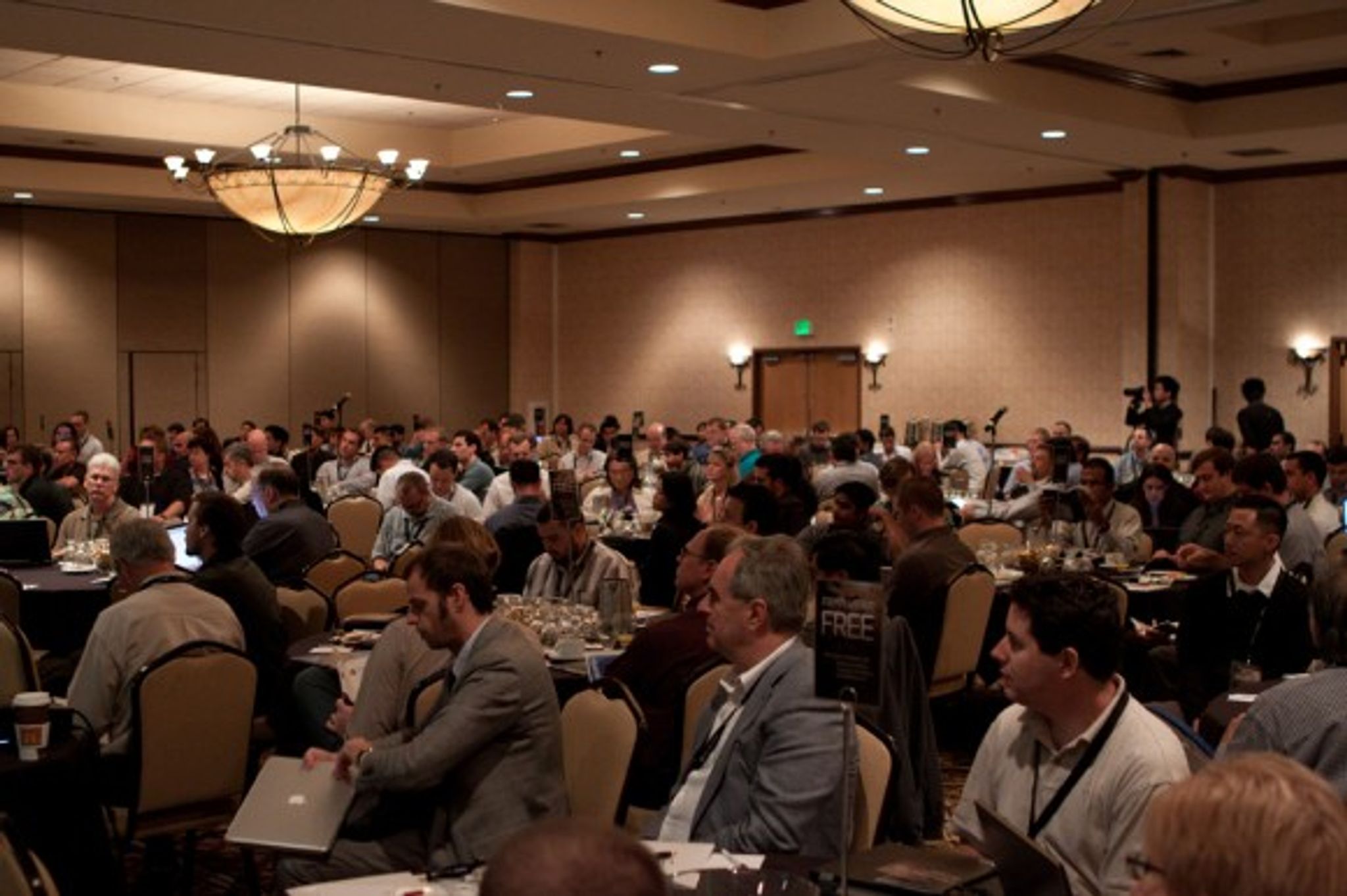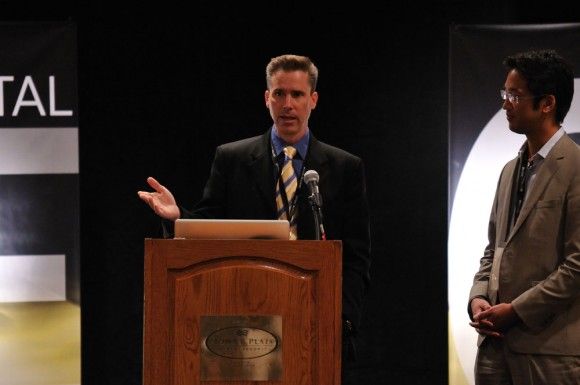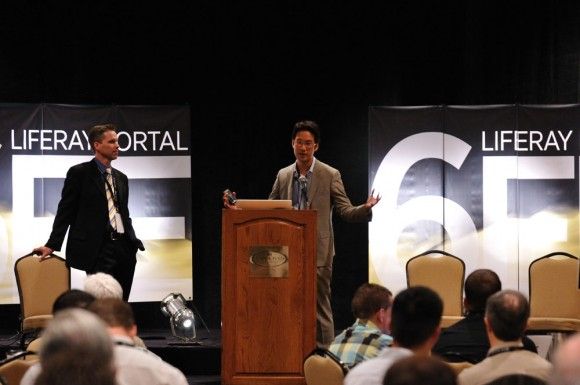Liferay release ushers in major improvements

Today marks the first day of Liferay's West Coast Symposium and CMS Critic was in attendance to cover this event.
There was definitely a large turnout with a crowd of approximately 250 or so in attendance. The attendees ranged from Liferay staff and community members to partners and customers and there was a lot of buzz in the air about the new release.

At 9:00 am, Liferay's Chief Marketing Officer, Paul Hinz took to the stage to begin the introduction of Liferay 6EE.

Some of the highlights from his talk:
- Back in 1995, we were building web applications, web content. Most of it was centered around Apache but they were very simple applications and content. Then came Tomcat was more focused on application development and building apps on the web. This in turn, led into the idea that we can't just build with random tools and have developers assemble things on their own, we actually need application stacks. In 2000, some of the major companies began providing these stacks: application layer, portal layers, collaboration layer, etc. These layers became more and more complex. Then jBoss came around and this was important because there was now a lower cost and it was lighter weight and easier to use. So now there was this open source aspect that had a lower cost and felt simpler and people liked it.
- We started to see more and more trending toward open source projects and applications. Then in 2005, this trend towards simplicity led to LAMP becoming very popular. A lot of the external properties were being built using LAMP and the focus from developers started to gear towards these open source stacks. Then a few more trends happened and rich apps came into play such as Wikipedia, Twitter, Facebook and similar properties and the social aspect of the web and of our content started to become a focus.
- Every five years, there is a major focus change and now in 2010 there is a change that is about to happen. A single enterprise has a large number of different applications that they have to build. The current trend seems to be towards what he called, Strategic Open Source.
- Strategic Open Source is where the CIO now focuses their attention not only on the mission critical layer of apps but actually starts looking at these lower level open source applications and wants to get them supported and integrated into the existing infrastructure.
- There is now a need to have a development platform that allows you to build your presentation layer, that gives you the content management and workflow capabilities and also gives you that rich developer aspect.
- Collaboration has changed how we are building applications. If you look at the enterprise, we started with email then calendars began being added. Over time, blogs, wikis and other platforms have been integrated. There is now a strong need to build social applications.
- There are a large number of companies that have portal based platforms but the platforms themselves are not progressing forward. This leaves their customers facing an end of feature life. The product may not be end of life but there will be no enhancements and with the new requirements we just discussed, this leaves these customers in a bad position.
- Liferay, however, continues to add features. They support 11 different operating systems, 12 different databases and 11 different containers.
- The customers who are facing end of feature life on their existing solutions are now going to be looking for a way out. Paul mentioned that a conservative number is 10,000 different customers who are facing end of feature life.
One of the most interesting announcements was the new First year Free offer that Liferay is extending to these customers who are facing end of feature life and are stuck on an aging platform. What they are offering is these customers can get Liferay for free for one year to help them migrate their existing infrastructure from these stagnant solutions to Liferay without having to pay licensing fees for both their existing solution and for Liferay.
This is a very interesting and, in my opinion, brilliant strategy that Liferay has taken on. Existing customers who are in this position are going to be very hard pressed to find any other solution that is providing this kind of offer.
To hear more of Paul's talk, you can download the audio recording which we've made available at the bottom of this article.
After Paul came Liferay CEO, Bryan Cheung to discuss the improvements that the new release brings to the table.

Some of Bryan's key points included:
- How do you get the benefits of tomcat without being at the mercy of open source volunteers and how do you get the benefit of enterprise software without the cumbersome overhead? He firmly believes that Liferay is about giving you all of the best options and allowing you to “be greedy”.
- Liferay 6 as a solution is complete. It provides a portal, WCM, workflow, collaboration in a single package which eliminates the need to get other products.
- What if you have existing products that you are tied to and are unwilling to migrate away from such as SAP or Salesforce? Liferay allows integration with these products as well. Not only that, but if for some reason you find Liferay is not the solution for your needs, migration away from the product is just as easy.
- Liferay is 90% more affordable than comparable solutions.
- There are 35,000 community members in addition to the existing employees which provides Liferay with a very large pool of developers that are continually enhancing and advancing their product.
- Liferay is also only 215mb in size. This includes tomcat, a database, web content management, blog server, wiki, portal, identity management and role management. It is everything you need without the software bloat.
Want to learn more? We have made our entire recording available for your enjoyment here: Liferay Announcement.
You can also visit Liferay on the web at http://www.liferay.com